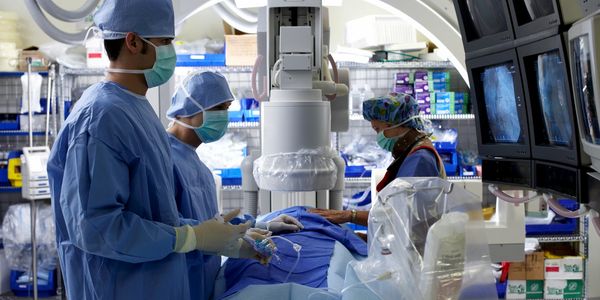Groin Hernia

What is a groin hernia?
A hernia is a defect (hole) in the abdominal muscles through which the abdominal contents (usually fat but sometimes intestines or other abdominal structures) can protrude. These occur at natural points of weakness in the muscles of the abdominal wall, usually in the inguinal (common), or femoral (less common) regions of the groin.
The term inguinal and femoral simply refer to the position in the groin where these hernias occur.
They can occur on one or both sides (bilateral) of the groin.

What causes a groin hernia?
Hernias may be present at birth, or develop in later life as a result of any factor that weakens the tissues of the abdominal wall (e.g. inherited genetics, increasing age, smoking, increased pressure within the abdomen – long term cough, §sustained heavy lifting).
Usually the development of a hernia is a combination of these factors. There is no good evidence that occasional heavy lifting is a risk factor for developing a hernia.
What are the symptoms?
Remember a hernia is simply a hole in the abdominal wall – a hole through which something can protrude. The hole itself is not painful. There is sometimes, but not always, some discomfort– but it is not excruciating pain.
So as a rule of thumb – if when you stand up or cough there is no swelling or a lump to see or feel – it is unlikely that you have a hernia – unlikely but not impossible.
When you lie down the protruding bit usually drops back through the hole and there is often nothing to see or feel – unless the hernia is stuck in the hole in the muscles. If the hernia doesn’t go back when you lie down this is called irreducible, (or sometimes incarcerated).
If bowel gets stuck in the hernia you may develop abdominal bloating, vomiting and constipation. If you develop these symptoms it is a medical emergency and without timely surgery the bowel can lose its blood supply and cause major complications.

How are they diagnosed?
Most groin hernias are diagnosed by the clinical history and examination alone.
Occasionally, if the diagnosis is unclear or if pain is the predominant symptom and there is no obvious swelling further investigations may be used. These include MRI scans, herniography and ultrasound scans. However, these scans have the problem that they may ‘over diagnose” hernias. In such cases they report a ‘possible’ or ‘small bulge’, which is really just a bit of normal tissue. So you can’t rely 100% on scans.

Do I need Surgery?
Although having a hernia is not usually a serious condition, hernias will not go away without surgical repair.
There is always the option to do nothing. This may be appropriate for longstanding hernias, which do not cause any symptoms and in patients with lots of other medical conditions. However, the majority of hernias will gradually become bigger and more uncomfortable with time, no matter how careful you are. Wearing a special device called a truss (support) to stop the lump coming out of the hole was used in the past, but is now thought to have no or limited benefit and are also fairly uncomfortable.

How is the surgery done?
The main approaches are open and laparoscopic (key-hole).
Open may be more appropriate for a large hernia that extends into the scrotum. Open repair is performed through one incision in the groin. Laparoscopic repair is performed through three small incisions
The hernia sac and its contents are next reduced and a piece of prosthetic mesh

After Surgery
Your surgery will be performed as a day-case of an overnight stay.
Keep your dressings on your wound to keep them dry for the first five days. You can still shower or bathe but dab dry your dressings to prevent them from peeling off prematurely.
Try to avoid strenuous exercise or heavy lifting for the first four weeks.
Copyright © 2025 Northern Surgical Care - All Rights Reserved.
This website uses cookies.
We use cookies to analyze website traffic and optimize your website experience. By accepting our use of cookies, your data will be aggregated with all other user data.